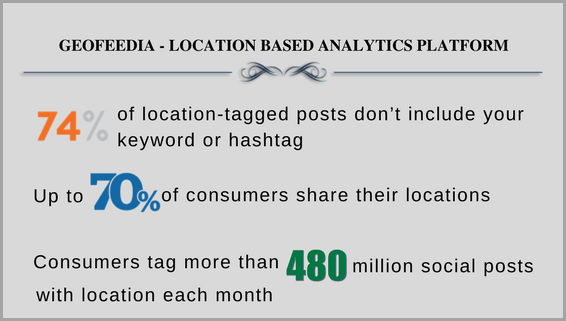Author: Mercy Livingstone / Source: Jeffbullas’s Blog

With increasing smartphone penetration worldwide, marketers have rightly adopted the mobile-first approach. However, in a world of ad-blocks, marketers need to be careful of delivering content that is irrelevant or annoying.
Fortunately, access to location data makes it possible to create highly relevant mobile targeting campaigns by ensuring users receive personalized and useful content at the best possible time.
The value of location intelligence
Location data comes in quite handy to target mobile devices effectively, enabling real-time message delivery based on a device’s location. Besides, real-time location intelligence can be used to build audience profiles that make it possible to create highly personal mobile campaigns by applying the offline behavior of users to the targeting process.
According to the LSA Market Landscape Report, location-targeted mobile advertising is expected to reach $32 billion by 2021. The report says that “marketers across the spectrum have awakened to the importance of location data as a powerful and versatile tool to identify audiences, gain competitive insights and observe offline consumer behavior.”
It further explains that brands are beginning to use location data for insights beyond marketing. Some growing applications of location intelligence (identified by the report) that can give a brand a competitive edge include:
- Identify audience segments (from offline behavior)
- Understand consumer purchase intent and preferences
- Match digital (and traditional) ads to real-world activity and transactions
- Understand customer activity from an operational perspective (what is our busiest time?) to improve the customer experience
- Gain competitive insights (where does the customer go and how often?)
- Benchmark store/location performance (internally or competitively)
- Enable more contextually relevant or personalized customer experiences
- Predict earnings, financial performance, and potential M&A activity
- Security and fraud prevention

Did you know that consumers prefer location-based ads? According to a Google study, 4 in 5 consumers want ads customized to their city, zip code or immediate surroundings.
In fact, more than 60% of consumers who participated in the study reported having used location information in ads. They said it was important to have the store address and phone number in ads on computer/tablet, and directions and the call button in ads on a smartphone.
Maintaining an omnichannel presence
According to Google, “6 in 10 internet users start shopping on one device but continue or finish on a different one.” This raises a unique challenge for businesses to be present on various channels a consumer expects them to be.
Besides, keeping their location data up to date on every platform where a consumer would turn to find them can be cumbersome for most brands, translating into missed opportunities for the business and a poor experience for customers.

This is where data amplifiers come handy. Data amplifiers refer to data publishers such as Google, Apple, Bing, Yelp and Facebook, and data aggregators such as Neustar that share a brand’s data with publishers.
By sharing their location data with these amplifiers, brands can effectively maintain an omnichannel presence in…
Audience Team
The digital audience insights you need to build, manage and market to your digital audiences.

